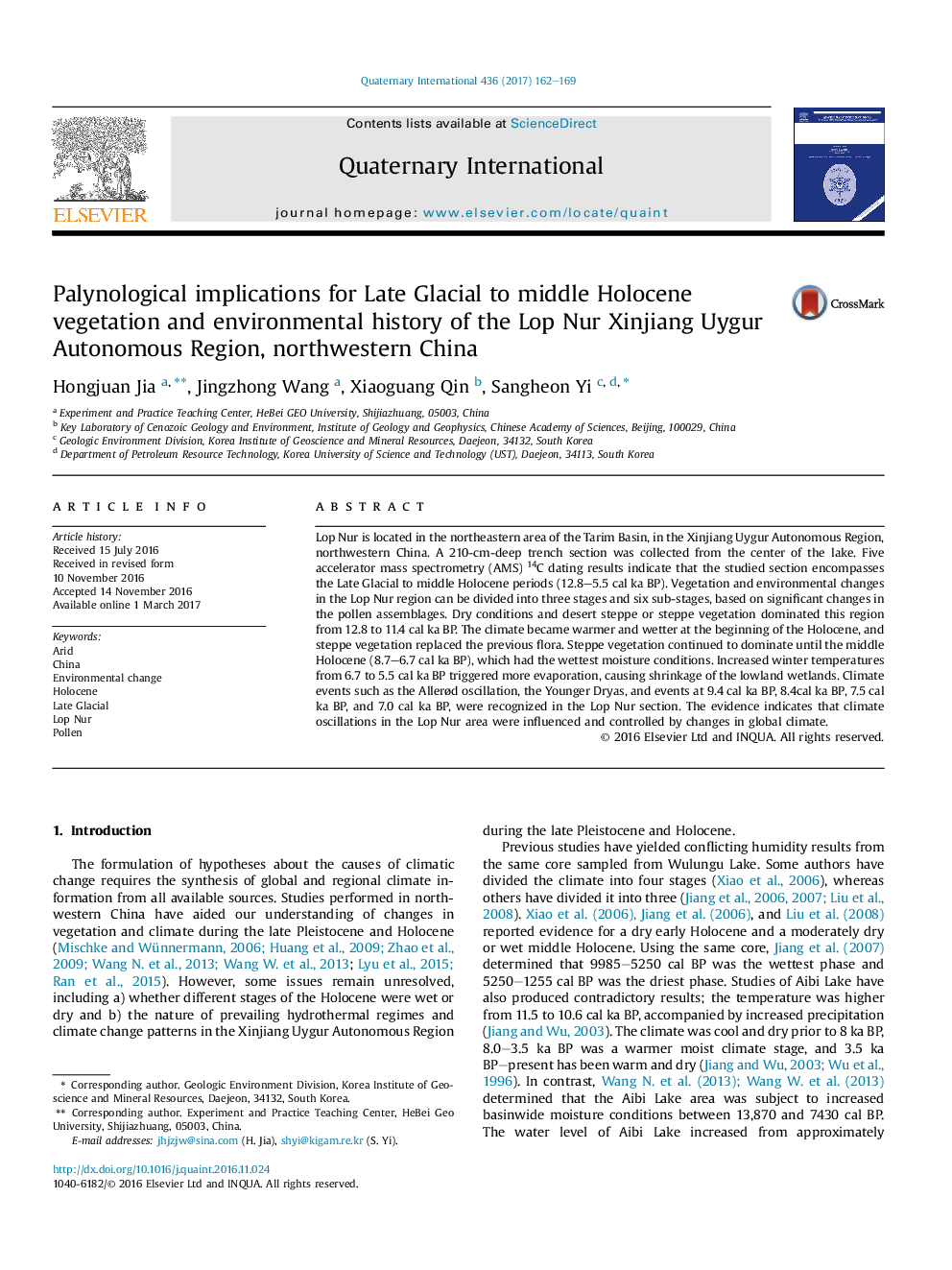| Article ID | Journal | Published Year | Pages | File Type |
|---|---|---|---|---|
| 5113549 | Quaternary International | 2017 | 8 Pages |
Abstract
Lop Nur is located in the northeastern area of the Tarim Basin, in the Xinjiang Uygur Autonomous Region, northwestern China. A 210-cm-deep trench section was collected from the center of the lake. Five accelerator mass spectrometry (AMS) 14C dating results indicate that the studied section encompasses the Late Glacial to middle Holocene periods (12.8-5.5 cal ka BP). Vegetation and environmental changes in the Lop Nur region can be divided into three stages and six sub-stages, based on significant changes in the pollen assemblages. Dry conditions and desert steppe or steppe vegetation dominated this region from 12.8 to 11.4 cal ka BP. The climate became warmer and wetter at the beginning of the Holocene, and steppe vegetation replaced the previous flora. Steppe vegetation continued to dominate until the middle Holocene (8.7-6.7 cal ka BP), which had the wettest moisture conditions. Increased winter temperatures from 6.7 to 5.5 cal ka BP triggered more evaporation, causing shrinkage of the lowland wetlands. Climate events such as the Allerød oscillation, the Younger Dryas, and events at 9.4 cal ka BP, 8.4cal ka BP, 7.5 cal ka BP, and 7.0 cal ka BP, were recognized in the Lop Nur section. The evidence indicates that climate oscillations in the Lop Nur area were influenced and controlled by changes in global climate.
Related Topics
Physical Sciences and Engineering
Earth and Planetary Sciences
Geology
Authors
Hongjuan Jia, Jingzhong Wang, Xiaoguang Qin, Sangheon Yi,
